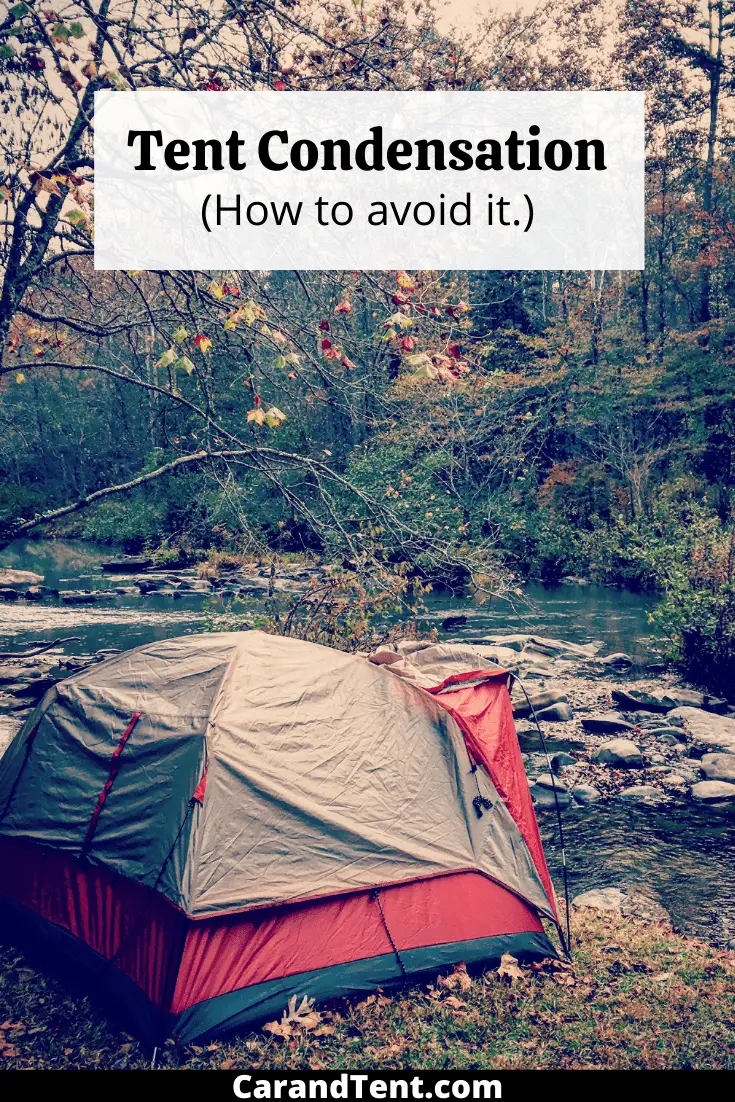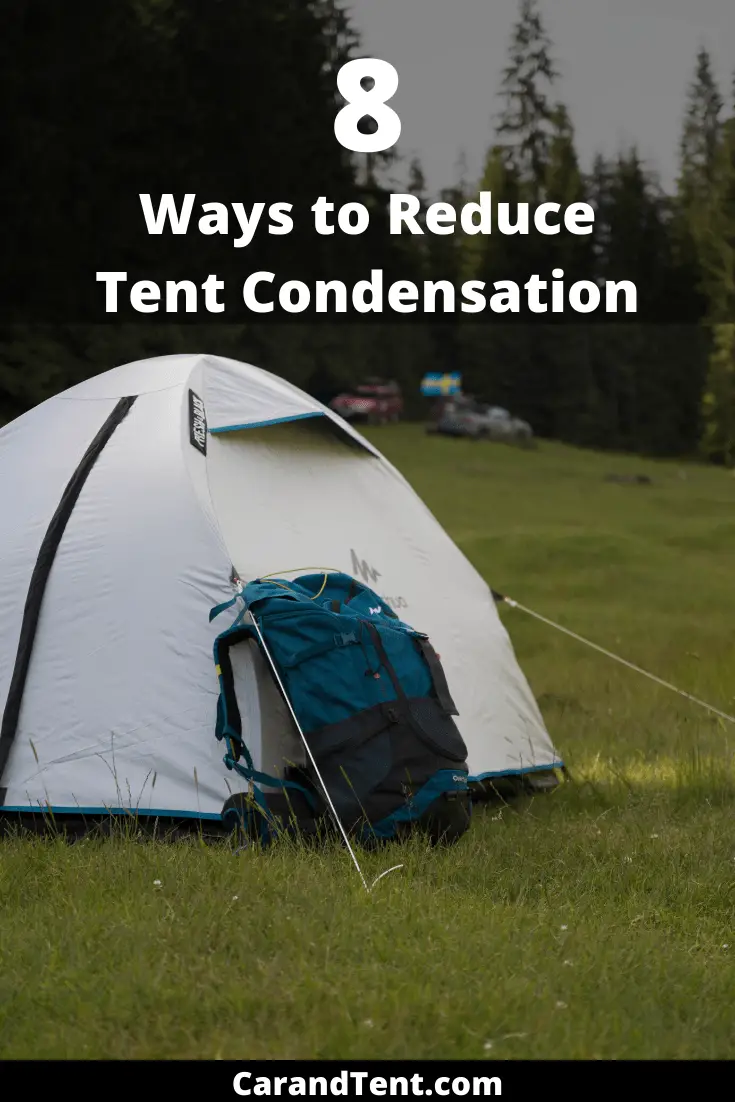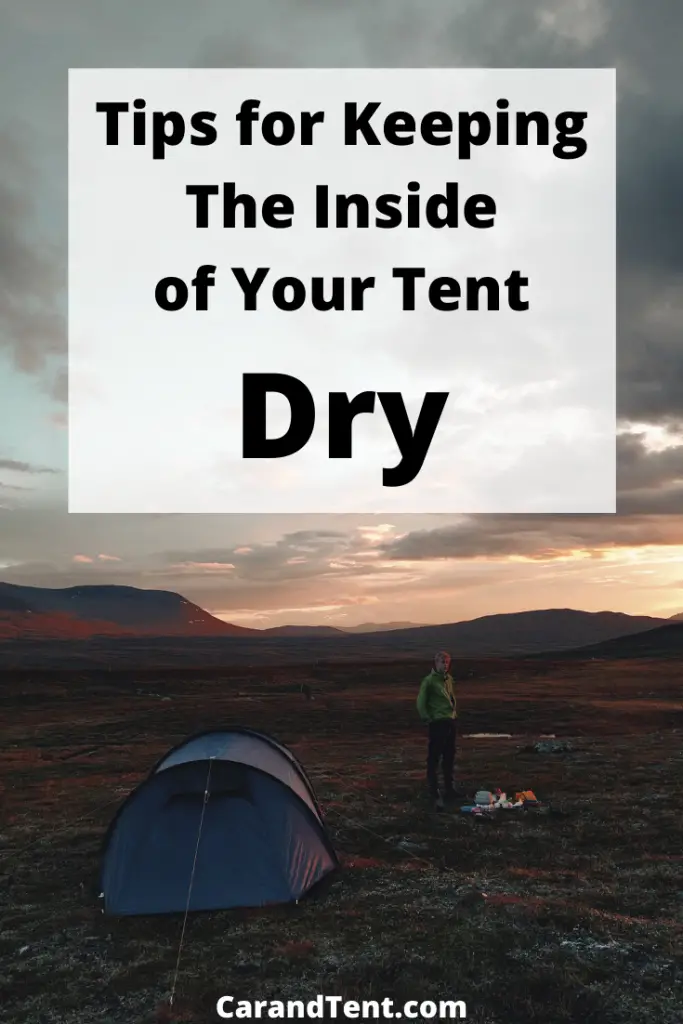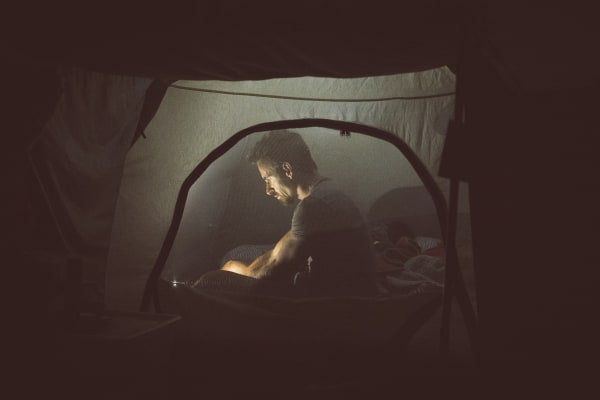
Waking up in a wet tent for the first time can be frustrating and confusing. This is especially true if you know for a fact that it didn’t rain overnight.
After it happens, you probably think to yourself, why does the inside of my tent get wet? The inside of your tent gets wet because of condensation. As you sleep each night your body puts off moisture with each and every breath you take. This moisture accumulates in your tent and you end up with a wet tent interior. Luckily, there are some steps you can take to avoid this.
Quick steps for avoiding a wet tent.
- Open a window.
- Take your rain fly off.
- Put your rain fly on properly.
- Use an electric heater.
- Stop using a gas heater.
- Add a tent fan.
- Don’t cook inside your tent.
- Get a bigger tent.
The easiest way to avoid the accumulation of condensation is to ventilate your tent. In most cases, this just involves opening up a window in your tent. Most larger tents will have windows with a mesh screen on them so you can open up a window and get ventilation without having to worry about insects flying in on you.
Smaller tents may not have windows but they’ll have natural ventilation. Unfortunately, putting the rain fly on top of the tent can close off this ventilation. This is especially true if the rain fly is not put on properly.
If you know the weather will be dry overnight then it is probably best to just leave the rain fly off completely. Otherwise, make sure you put the rain fly on properly. I’ve been guilty of just throwing the rain fly on and on each occasion I’ve woken up with a wet tent.
Each tent will have different instructions on how to put the rain fly on but in all cases, you’ll want to have it elevated off of the tent underneath. This gives the tent some breathing room and allows for air flow between the rain fly and the actual tent. Some tents will accomplish this by having you stake the rain fly out and others will do it with the use of additional posts and poles that suspend it off of the tent.
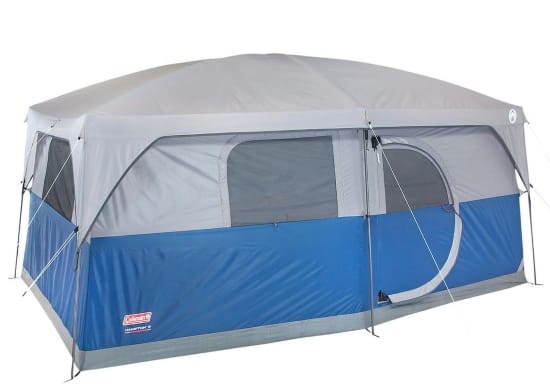
When winter camping in a state park or campground, you may be able to bring an electric heater with you. Electric heaters provide dry heat that will help to take the moisture out of the air for you. If you’ve ever used electric heat or forced air heat in your home you’ve probably experienced this and you may have even used a humidifier to add moisture back into the air.
On the other hand, portable propane gas heaters produce moisture. In this case, you may want to stop using them. If you do have to use a gas heater in your tent, make sure you give your tent an ample amount of ventilation.
Related: “Are Camping Heaters Safe?”
Tent fans can help as well. Large box fans can be used in large tents when you have access to electricity but these aren’t the only fan options you can use. There are many small battery-powered fans that you can purchase for your tent. Some sit on a stand and others hang from the center of your tent.
Either kind will work but the overhead hanging ones are usually more convenient and more efficient. Most newer tents will come with a strap to suspend them with so you shouldn’t have to make any alterations to your tent.
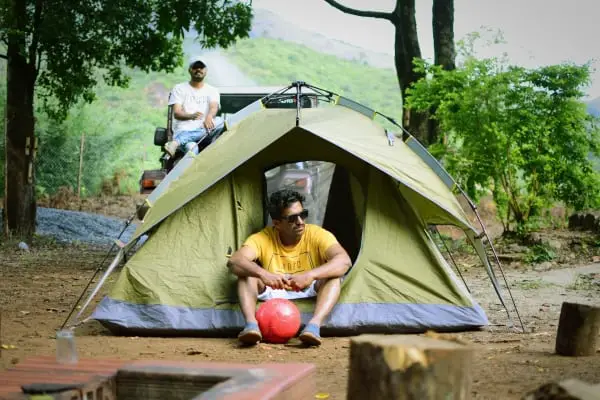
Another thought to keep in mind is that you should not be cooking inside of your tent. Even heating up a pot of soup on a camping stove inside of your tent can lead to excess moisture which will end up on the walls and on the ceiling of your tent. It may not seem bad at first but add in condensation from your body overnight and you could end up with much more moisture than you bargained for.
If you’re still having trouble with condensation, you may want to consider getting a larger tent. The larger the tent, the more airflow you’ll have between you and the walls and ceilings of your tent. More airflow equals less condensation and even if your tent does end up with wet walls, at least you’ll be further away from them while you sleep. This will reduce the chances that you’ll roll into them and wake up with a face full of water.
What if The Floor of Your Tent is Still Getting Wet
Sometimes campsites have platforms that campers can use. These are nice since they get you off of the wet ground but unfortunately, they can also lead to condensation. This is because cold air may be able to circulate underneath your tent. In this case, the cold air from the floor hits the warmth of your body and condensation occurs underneath of you. This leads to a wet tent floor.
To stop this you have a few options. The easiest option may be to simply set your tent up on the ground next to the tent platform. Another option is to sleep on a cot. This gets you up off the ground of the tent floor and creates a second air space underneath of you. In most cases, this will eliminate the condensation but not always.
If you’re still getting condensation on your tent’s floor, you may need to block the airflow underneath the tent platform. You can do this by putting up any physical barrier. This could be dirt, rocks, duffel bags, or even plastic wrap.

Wet Tent Floor Without a Platform
Are you camping on the ground and still getting a wet tent floor? If so, you may be camping in an area that is likely to cause moisture buildup. Stay away from grassy areas and try to camp directly on the dirt when possible. If this isn’t possible, you’ll probably want to add a tent footprint to the ground. This should be placed between the ground and your tent.
Tent footprints can often be purchased with your tent or you can simply make one with a tarp. If you go the DIY route just remember that the tent footprint should be smaller than the bottom of your floor. This helps to keep rainwater from getting trapped underneath your tent. With a larger tent footprint, you may have water pool up underneath of your tent and you may end up waking up in a puddle of water.
You can also go the cot route with this type of tent setup as well. Elevate yourself off of the floor with a nice cot and the moisture will buildup on the floor and not on you and your sleeping bag. In the morning take a dry cloth and wipe the floor down to remove any moisture that has built up overnight. You can use this same cloth to wipe away any moisture that has built up on the walls of your tent as well.
Related Questions
How do I dry out my tent?
The best way to dry out a tent is to simply open it up in the sun. Sunlight and proper airflow will help to quickly dry out any condensation that has built up inside of your tent. If you have any windows on your tent, open them up and if you have a fan that you can use, don’t hesitate to do so.
Why does the inside of my sleeping bag get wet?
The inside of a sleeping bag usually gets wet due to condensation. You can easily avoid this by keeping your face outside of your sleeping bag so that you are not breathing in it. In most cases, you’re putting your head and face inside of your sleeping bag because you are too cold. Avoid this by dressing warmly each night and using a sleeping bag that is warm enough for the temperature you’re camping in.
How do I dry my sleeping bag out?
When you’re camping, the easiest way to dry your sleeping bag is to open it up and hang it out to dry in the sun. Hang it in an area where it can take advantage of the breeze and it will dry out quicker. If you’re winter camping in a campsite, you can use an electric heater to help dry it out but be careful not to put the heater too close to the bag as this can cause a fire.

